Best Places For Wreck Diving
Scuba diving in and around a shipwreck is a unique experience where human history combines with the natural world. Wrecks form one of the few phenomenons where introducing a man-made structure into the surrounding natural environment can often increase the range and diversity of life in the area. The biodiversity they can support is commonly world-class, attracting all manner of species, from the smallest of macro life to the giants of the sea. It's not unusual for several ships to be located within a small area, especially where many may have been sunk at the same time during raids as part of military campaigns - for example, World War Two. This gives an ideal opportunity for adventurous divers to explore many such wrecks over a few days, for which a liveaboard dive trip lasting several nights can be perfect.
Over time, ships can become covered in life, so much so that to many, they are known as artificial reefs, acting in the same role as the natural coral reef. As soon as a ship sinks, its huge structure provides shelter for organisms in an often desolate seabed surrounding, resulting in it becoming rapidly inhabited by many forms of marine life. The structures are usually made of steel, which is exceptionally hard-wearing, giving an excellent foundation for larvae to grow, followed by soft corals that form a framework highly similar to natural reefs. This, in turn, attracts vast numbers of reef fish, joined by larger predators and pelagics. The result can be truly mesmerizing and is why numerous shipwrecks consistently feature in lists of the planet's most incredible scuba diving sites.
Egypt
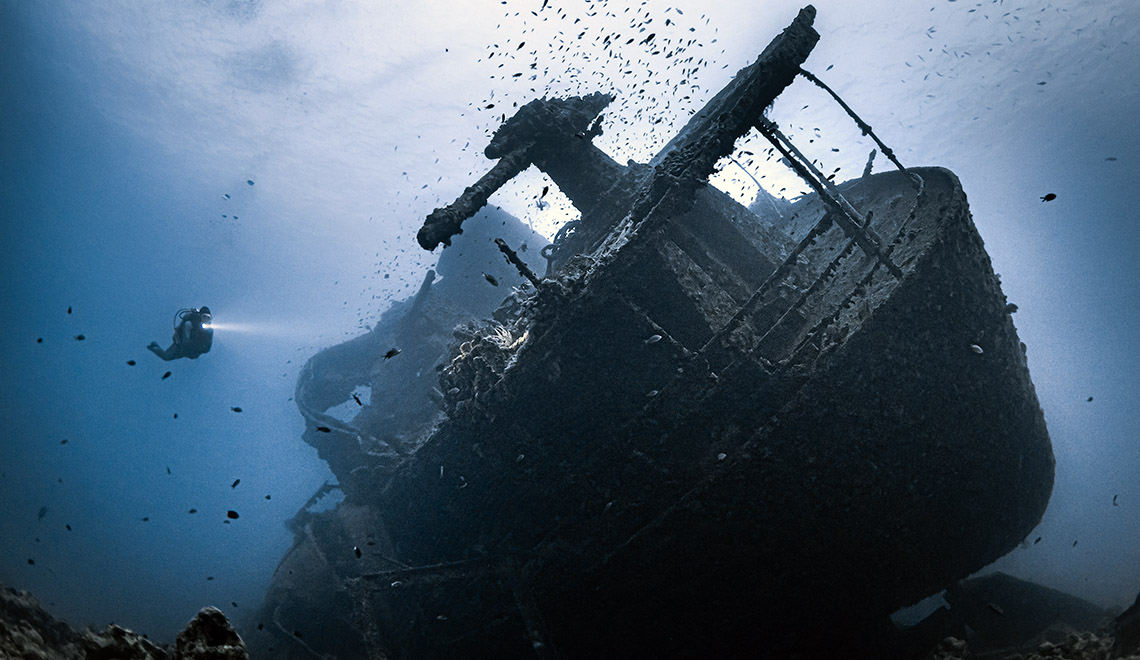
Egypt and the Red Sea are an absolute mecca for scuba diving, and for good reason. There's everything one could ask for from a diving destination - warm weather, crystal clear water, protected marine reserves, efficient infrastructure, and many marine life. Some fabulous shipwrecks can be found here, too, particularly in the Northern regions of the Red Sea. The SS Thistlegorm was sunk in 1941 before it was able to deliver its cargo to the British in North Africa and is now a war grave and underwater museum. The vessel is over 400 feet long, and so often, the best idea is to visit the site on a liveaboard that will allow divers to undertake several dives per day over a more extended period. You'll come across motorbikes, trucks, guns, and other cargo combined with a huge array of resident marine life.
The site of Abu Nuhas, slightly south of Thistlegorm, features 4 famous wrecks accessible to divers, the Giannis D, Carnatic, Chrisoula K, and Kimon M. These offer several penetration opportunities and many swim-throughs, as well as the chance to view life such Lionfish, Triggerfish, and Dolphins.
For those who like to have a mix of dive experiences, Emperor Elite offers the Reefs and Wrecks trip, which gives divers the best of both worlds. Not only will you visit the famous wrecks of the north, such as the Giannis D, Carnatic, and Thistlegorm, but you will also visit the stunning reefs of Shark and Yolanda at Ras Mohammed and the Straits of Gubal—the perfect mix for reef and wreck lovers alike.
Micronesia
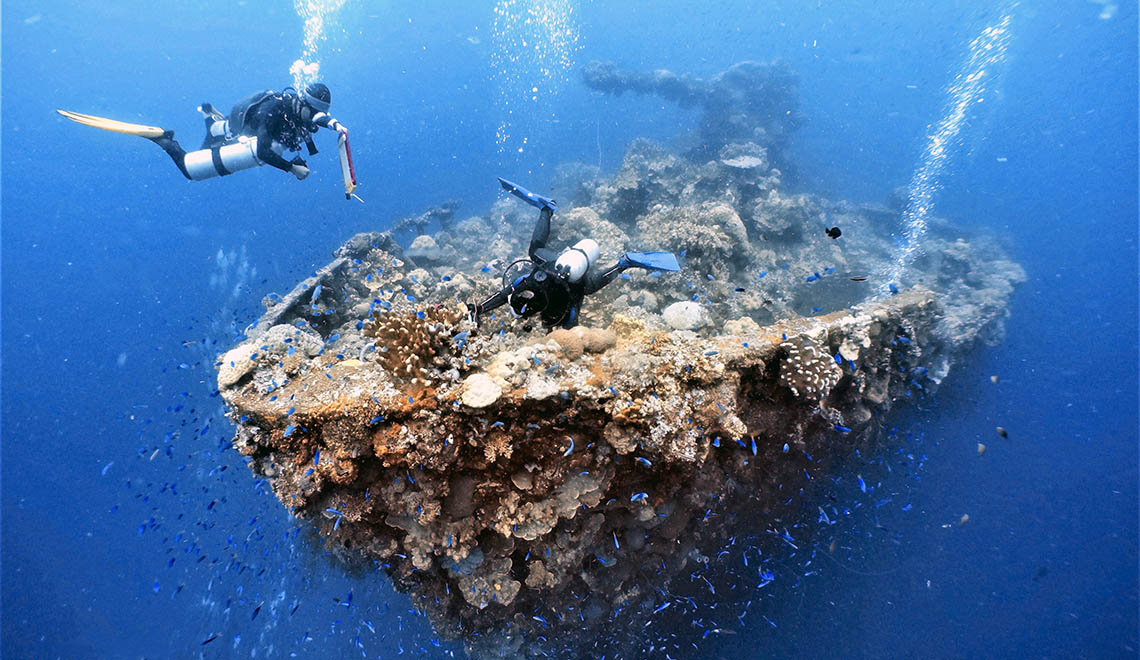
The stunning turquoise islands, cobalt blue lagoons, and a seemingly endless number of outstanding dive sites that form part of Micronesia in the Western Pacific ensure that this remote region is a favorite of many scuba divers. It also features numerous Second World War wrecks, many of which can be dived while on a liveaboard dive tour. The famous Iro Maru wreck is located in the Palau region of Micronesia. It's a large freighter that was sunk in 1944 and has since become the home to a vast array of marine life. Several structures, such as guns and king posts, can still be seen, with many forms of coral, macro life, and reef fish covering the entire ship.
Liveaboards in Micronesia often spend time at Chuuk (Truk) Lagoon, the site of several shipwrecks. There's some good variety here, with options for Tec divers and the less experienced. Fujikawa and Sankisan Maru are perhaps the most well-known vessels here, featuring airplane fuselages and engines, ammo, and trucks, and the opportunity for divers to navigate through the various compartments still intact within the structures.
Cayman Islands
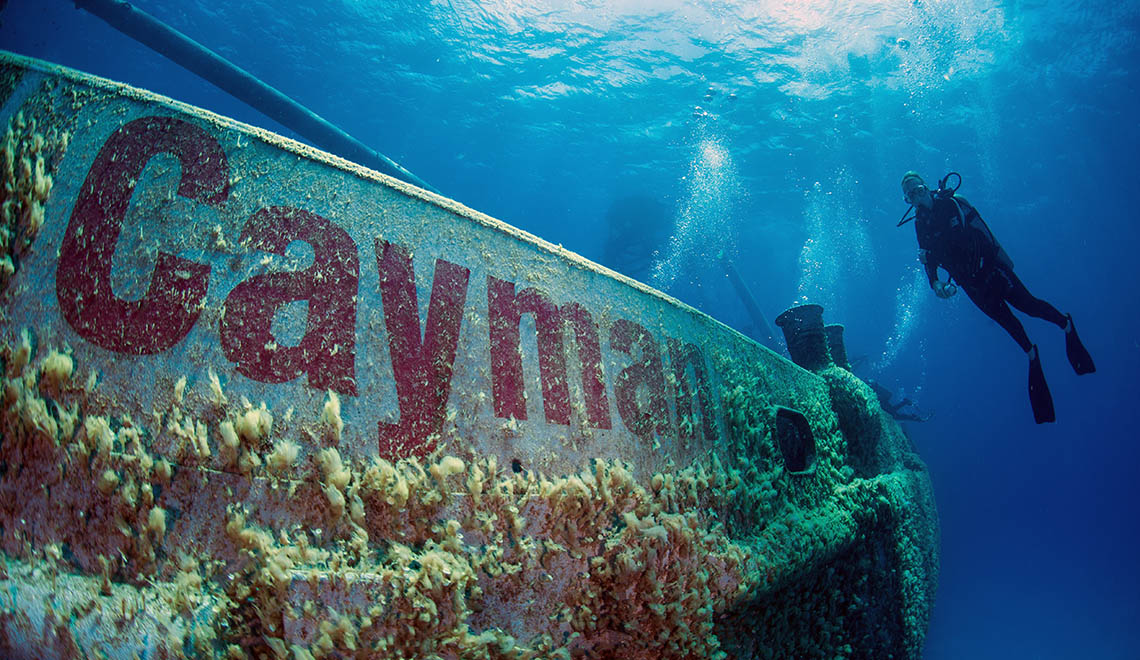
The Caribbean is full of spectacular scenery and marine reserves, with the Cayman Islands being up there with the best. Two wrecks are of particular interest here: Kittiwake and Captain Keith Tibbetts. USS Kittiwake was a US submarine rescue vessel in service between 1946 and 1994 and was sunk in 2011 in Grand Cayman; it now serves as a fantastic artificial reef, great for exploring both inside and out.
Keith Tibbetts is a Russian ship that was also purposefully sunk (in 1996) and is in excellent condition. Despite its relative youth as an artificial wreck, it is already home to hard corals and colorful sponges.
Philippines - Coron
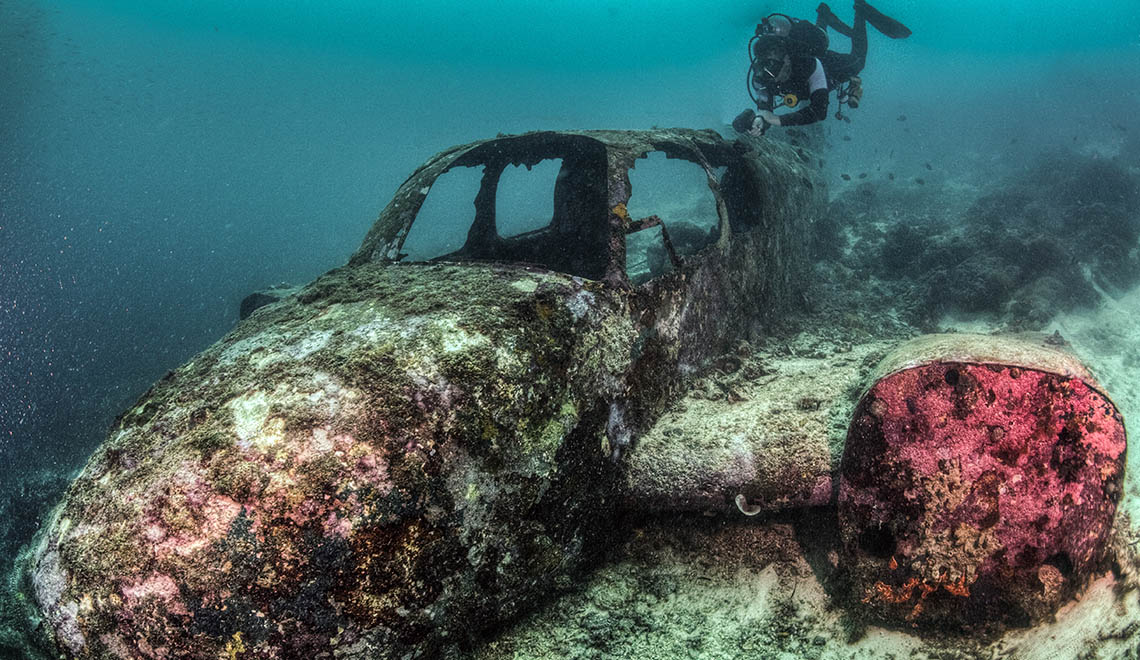
Consisting of over 7,000 islands, the Philippines has amazing beaches, coastlines, and underwater action. Slightly less well known and also a little off the beaten track is the region of Coron in the province of Palawan, which is home to a fleet of Japanese supply ships that were sunk in 1944, all dotted around the 50 or so islands that make up the area. It's slowly becoming recognized as one of the best places in the world for wreck diving, showcasing a variety of vessel types, from small gunboats to huge seaplane tenders and tankers. Sailing from one wreck to another aboard a liveaboard will allow divers to witness the fabulous scenery and remote islands that make up this place, once a scene of one of World War Two's heaviest sea battles.
Solomon Islands
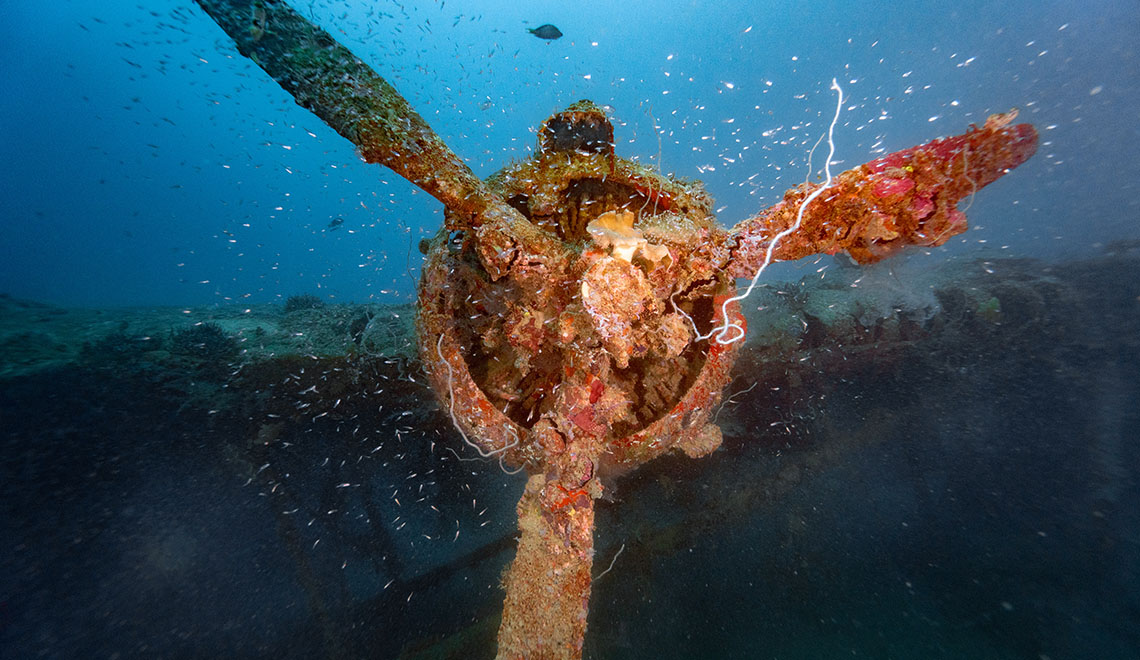
As its name suggests, 'Iron Bottom Sound' is the site of over 200 ships and 690 aircraft that lie on the seabed of Savo Sound in the Solomon Islands, which sank during the battle of Guadalcanal between 1942 and 1943. There are military relics from both the Japanese and Americans, including destroyers, minesweepers, submarines, troop carriers, and planes, giving a massively diverse range of sites for the adventurous diver. Over the years, the wrecks have been encrusted in the complete range of tropical corals, and if you are aboard a liveaboard dive boat, you'll likely see the likes of Manta Rays, Sharks, and schools of huge pelagics, as you'll be diving over several days.
Wreck diving allows divers to encounter glimpses of the past and some fabulous examples of marine life, with the biodiversity often reaching that of nearby natural coral reefs. They vary from small wrecks that are easy to navigate to steel mazes with complex corridors and hidden compartments. It’s worth thinking about doing a wreck diving qualification as sometimes operators will require divers to possess this should they want to swim through the structure - and often, it’s within the main body of the wreck that the most interesting features can be found. If, however, you’d rather not penetrate, it’s still a fantastic experience to swim around the outside of most wrecks, witnessing how it has become home to vast numbers of animals and an astounding array of marine creatures.










